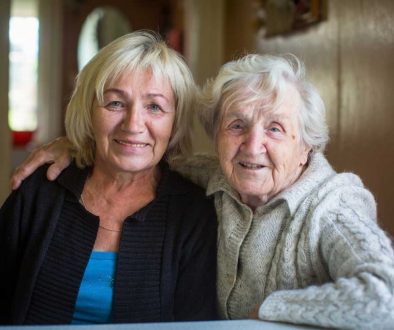What Is Hospice Care At Home?
Most people who have serious illnesses say they would prefer to die at home.
But unfortunately, this is not the case…
Most people die in hospitals.
In fact, in one Dartmouth study, of the patients who wanted to die at home, more than half died in the hospital.
Why?
It’s often because people don’t understand their options. They don’t have the info they need to make a decision that aligns with their wishes.
We want to help more people understand what hospice is. And what hospice care at home is. So you, or your loved ones, can get the type of care you need, where you want to receive it.
Here’s what you need to know.
First of all, what is hospice?
Hospice is care that is given to those with six months or less to live.
Hospice care is different from curative care. Curative care seeks to cure or treat the illness. However, with hospice, patients are given comfort care only to manage pain and other symptoms of the illness.
One of the benefits of hospice is that it enables you to be cared for in your own home, surrounded by those you love.
Often, those in hospice care live longer. They also enjoy a much higher quality of life.
One of the benefits of hospice is that it enables you to be cared for in your own home, surrounded by those you love.
What Happens with Hospice Home Care?
First, a patient must be referred to hospice.
You may be surprised to learn that anyone can refer a patient to hospice: a doctor, a relative—or even the patient themselves!
Once you’ve been referred, a hospice team will meet with you and your family. At this time, the benefits of hospice are explained, and a care team is put in place.
This care team consists of many members including:
- Doctors
- Nurses
- Nursing assistants
- Social Workers
- Counselors
- Chaplains
Once the team is in place, a health care plan is created.
This involves obtaining any needed medical supplies and medications. They’ll also speak with you about hospice insurance and Medicare benefits.
Aspects of Home Visits
During hospice care, you will receive visits from team members.
This includes nurses who will provide assessments and administer medication. Social workers will help locate resources. And chaplains, if part of your team, will serve as a source of spiritual support for the entire family.
The hospice team will work with the family to create a schedule of nursing visits and to provide help with activities of daily living, such as bathing or personal care.
As the disease progresses, hospice workers may increase the frequency of their visits, even going as far as providing care 24/7.
Hospice Works Wherever Patients Call Home
For some patients, home may be a skilled nursing facility, while others may stay in a “hospice house” or similar environment.
Wherever a patient calls “home,” hospice will be there to help.
Hospice Care Continues to Help the Family
When the hospice patient passes away, members of the team are still available to help the family.
This may be through assisting with funeral arrangements and paperwork, providing bereavement care and helping the family find grief support groups in their area.
Some hospice organizations also offer camps and similar activities for children who have lost a parent or close family member.
Hospice Care Allows You to Spend More Time at Home
When faced with a serious illness, wouldn’t you prefer to be surrounded by family? Most people would.
Unfortunately, misconceptions about hospice often discourage thousands from getting the help they need and deserve.
Want More Facts About Hospice?
At Hospice Wise, we realize that a lot of people don’t know about hospice or its range of services. That’s why we’ve put together the information on this site. And why we continue to add to it on a regular basis.
And if you would like help getting connected with an hospice provider near you or your loved one, we can help with that, too.












